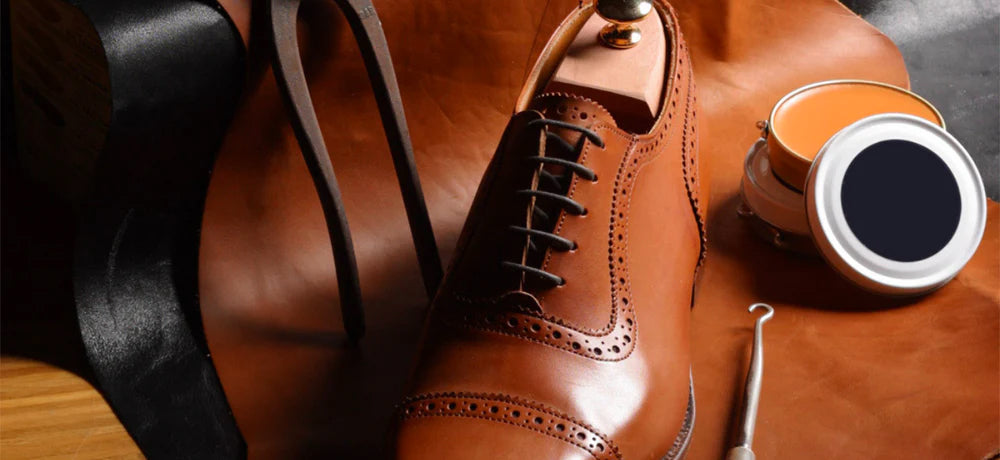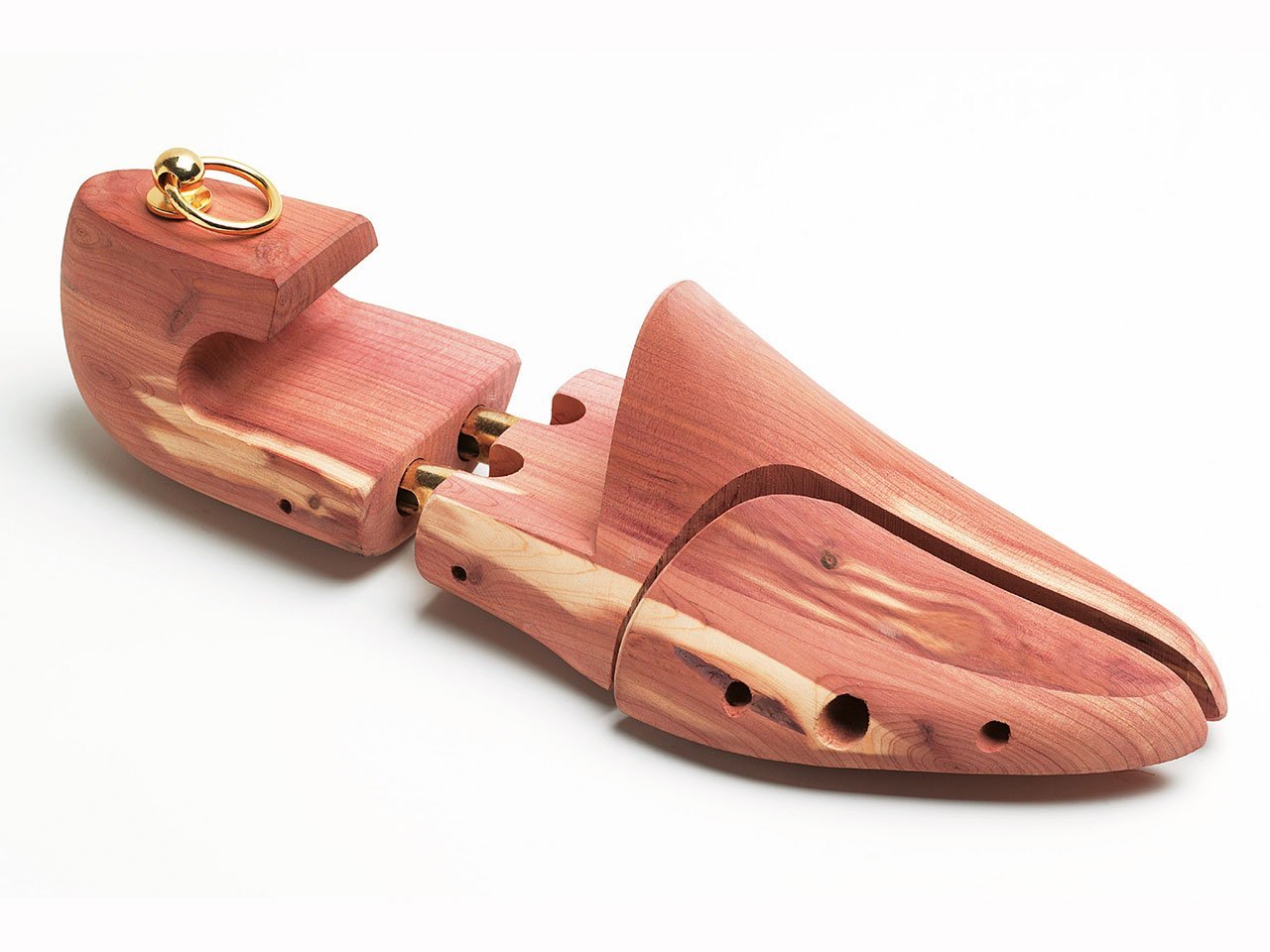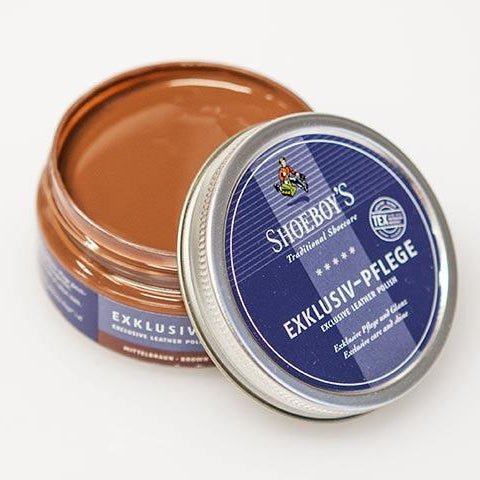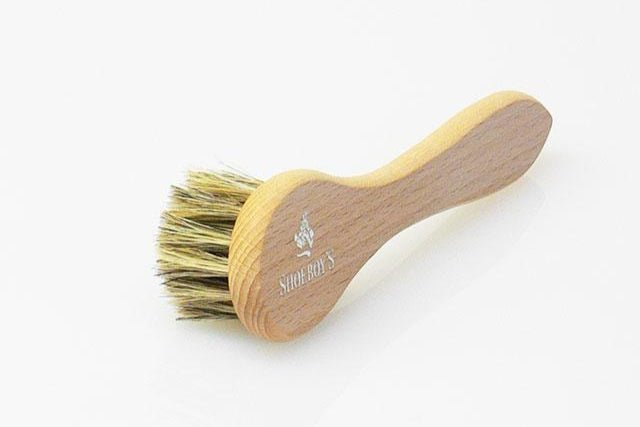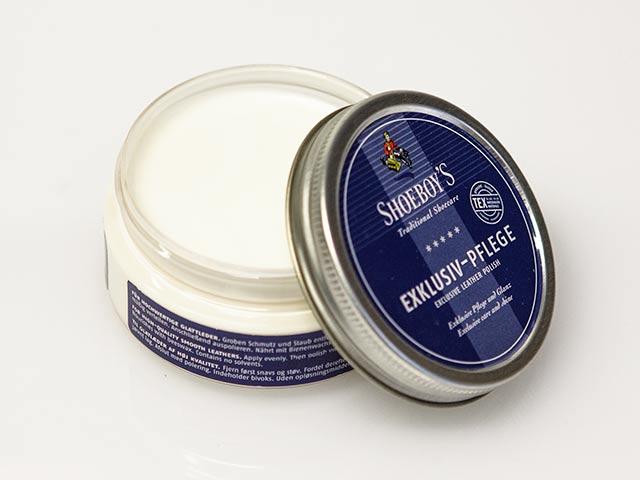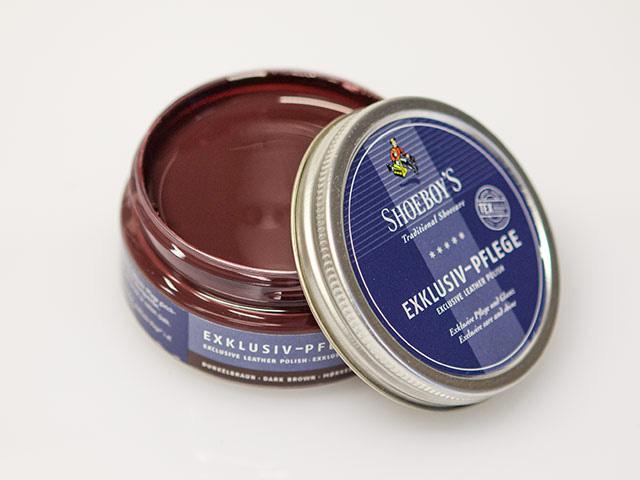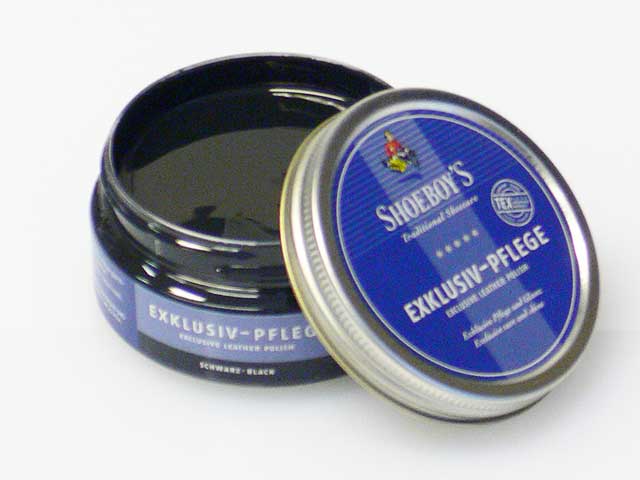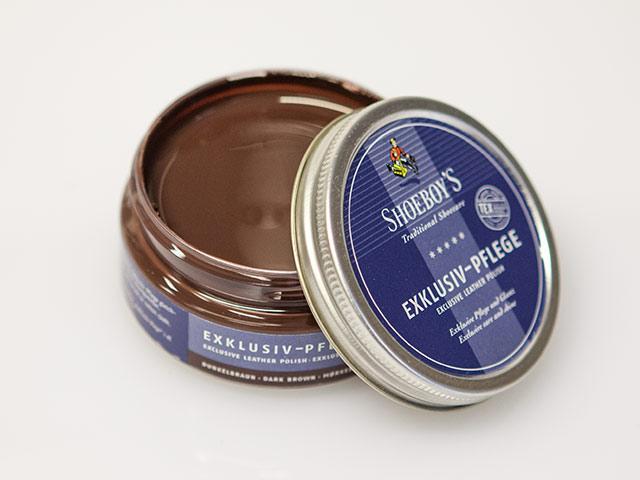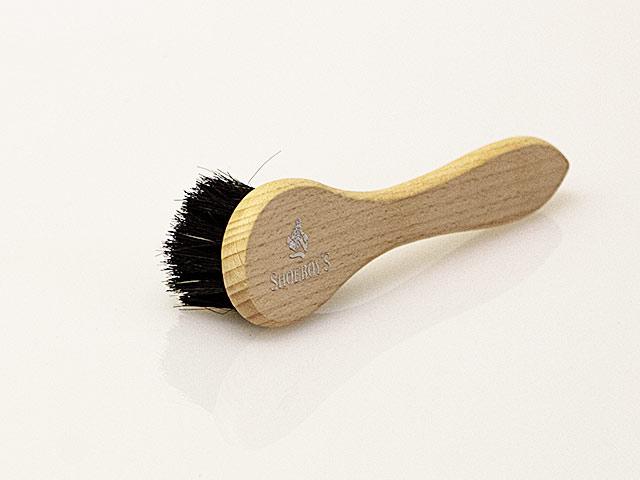Read everything you need to know about Crocket's Shoes' quality in our shoe glossary: What does "goodyear-welted shoe" actually mean? What classic shoe styles are there? And what sole options are available? And finally: how should you care for leather shoes so they last a long time and always look good?
What does "goodyear welted shoes" mean?
First of all, good welted shoes are handmade. The sole is sewn by hand, not just glued to the welt. Our welts are sewn using the "Goodyear welting" process, see box.
This process allows the shoe to provide a firm hold for the foot. At the same time, the sole remains elastic enough to adapt to the natural rolling motion of the foot.
Wearing Goodyear-welted shoes demonstrates a commitment to quality, craftsmanship, and tradition. This makes Goodyear-welted shoes the perfect business shoe.
Some people claim, "Shoes reflect a person's character." Whether this is true is debatable, but it is important that shoes should protect the foot. The fact is that we no longer spend much time on soft surfaces, but almost exclusively on hard surfaces. And this puts strain on the ankle, knee, hip joints, and spine. Good footwear should therefore support the foot without constricting it and simultaneously absorb the pressure of the hard surface.
Goodyear welted
More than two hundred steps are required to make a croquet shoe. The shoe is constructed from bottom to top as follows: heel and outsole, cork cushioning with articulated spring, and insole.
The insole is the heart of the shoe. The welt is attached to the upper leather with a seam that is invisible at the end. The outsole is attached to the welt with a visible seam (unless a split seam technique is used). These seams are created using machines developed by the United Shoe Machinery Corporation and Charles Goodyear Jr. Goodyear welted shoes are elastic and comfortable because all layers of the base can move relative to each other. The welted shoe is (almost) waterproof.
The footbed
The cork insert between the insole and the outsole is also important; it absorbs moisture and conforms to the footbed. In welted shoes, cork is used as an elastic insert to support the already integrated footbed. The advantage of this material is that the foot presses its own "bed" into the cork layer, creating an optimal fit.
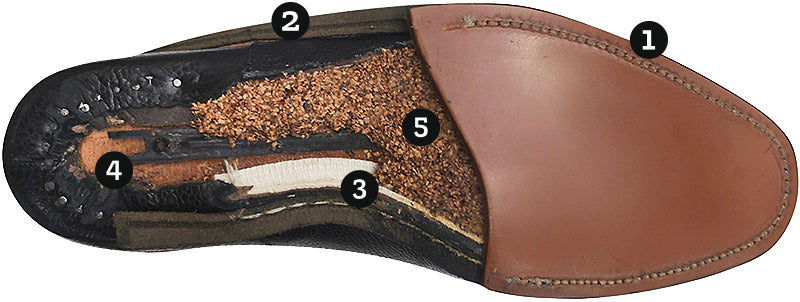
1. The seam as a connection between the frame and the outsole.
2. The welt, the connection between the upper leather and the outsole.
3. The insole.
4. The hinge spring for additional stability.
5. The cork insole provides insulation against cold and heat. The wearer presses their individual footbed into the cork insole, providing additional comfort.
John Crocket Shoes
Crocket's Classic shoes are Goodyear-welted and, without exception, are handcrafted. They are known for their excellent value for money. Customers pay no middlemen, as the shoes are made directly for John Crocket.
The croquet shoe is inspected and burnished by hand after completion, making each pair unique.
Classic shoe shapes
English shoes are familiar to anyone familiar with classic men's shoes. They are English shoe styles, giving them names like Oxford , Derby , Brogue , or Monk . To describe the different shoe styles, a distinction is made between categories such as boots, loafers, etc.
Men's low shoes are divided into lace-up shoes, loafers (without laces), and buckle shoes (monks). Lace-up shoes are divided into Derby shoes (with open lacing) and Oxford shoes, a men's low shoe with closed lacing that has been popular since 1880.
The term "brogue" originates from Ireland and Scotland ("brog"). It refers to perforated decorations in shoes, which in earlier times primarily served to facilitate drying. Today, the ornaments are a stylistic element that is added to the shoe.
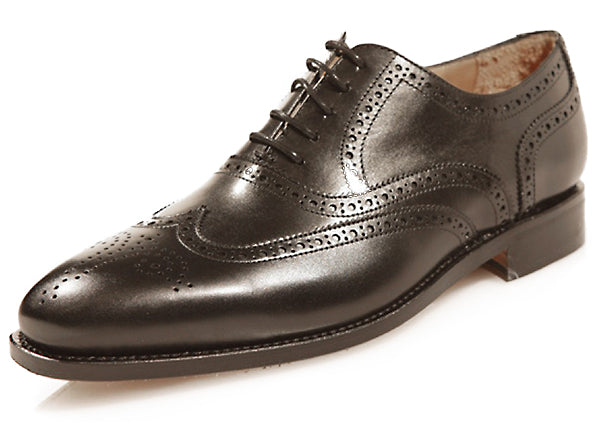
The full brogue has a curved perforated pattern and is often referred to as a Budapester. Its typical features are the wingtip and the attached heel cap, which are decorated along the edges. This shoe is suitable for both suits and jeans, but even in black, it should not be worn after 5 p.m.
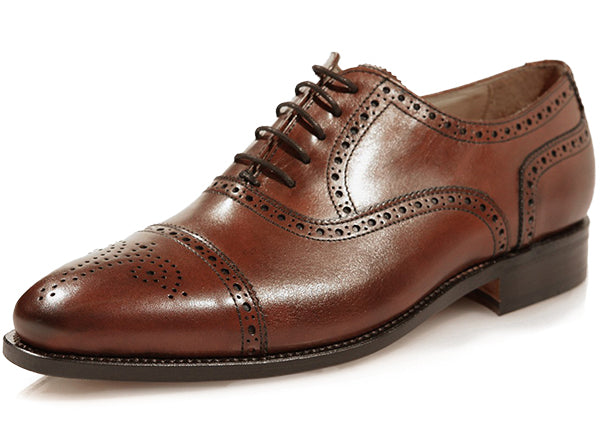
The semi-brogue differs from the full brogue in that it has less pronounced perforation and a straight toe cap. It's a more understated, elegant version of the full brogue. It can also be worn with a casual jacket.
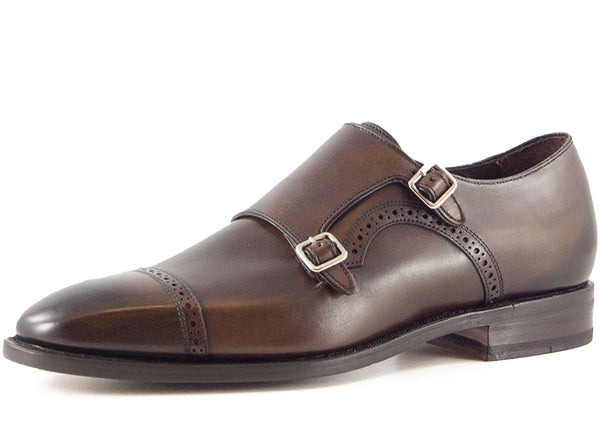
An elegant buckle shoe with a fastening on the side of the vamp. Its name actually comes from monks, whose shoes had a strap fastening. The shoe is worn with narrower-cut trousers whose fabric does not conceal the fastening.
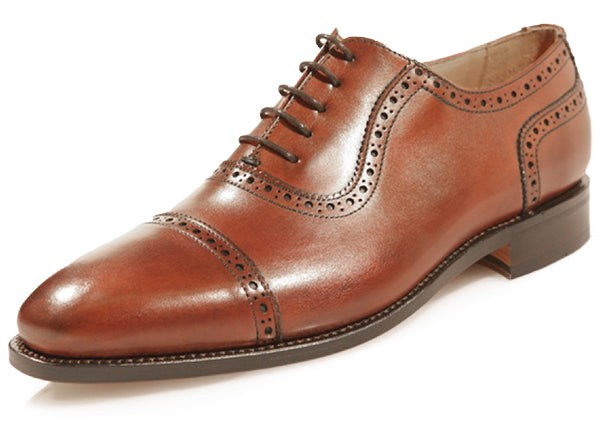
The Punched Oxford, with its perforated pattern, lies between the Brogue and the Plain Oxford. With its decoration on the toe seam, the border between the sides, and the heel, it is neither as formal as the Plain Oxford nor as playful as the Full Brogue.
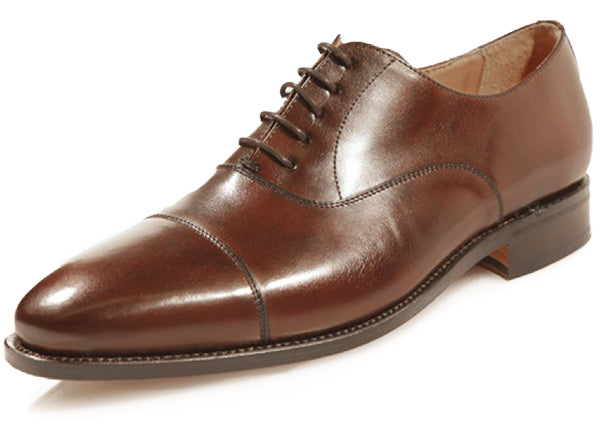
The Plain Oxford is the simplest version of the English shoe. The only decoration is the seam on the toe cap and the seam between the vamp and the sides. In black, it can also be worn with a tuxedo.
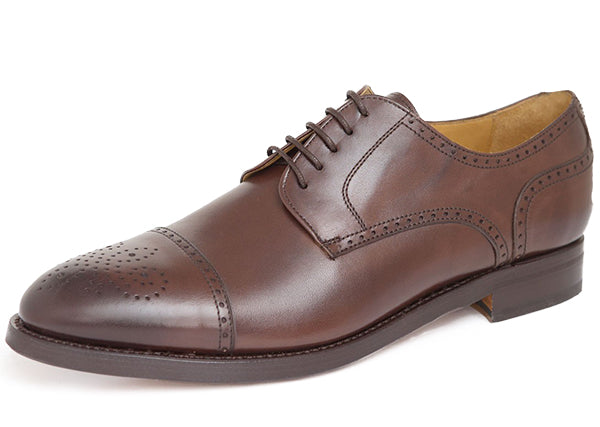
In the Derby cut, the two side panels that hold the lacing lie on the continuous front panel. This makes it easy to put on. The simpler the design, the more formal the occasion.
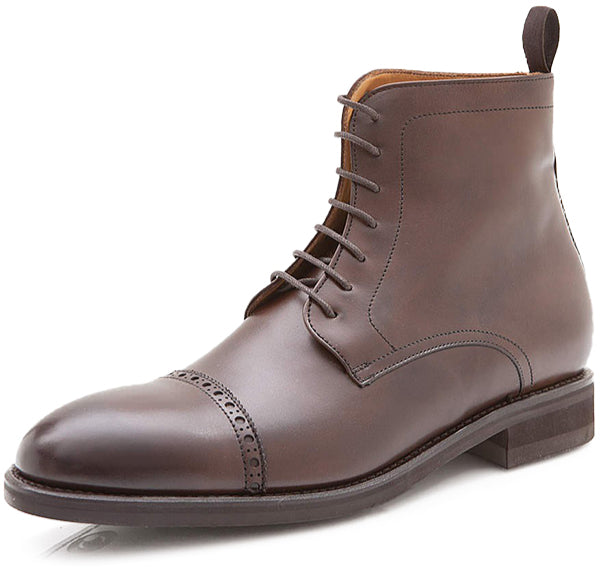
The Derby Punched Oxford Boot is a variation of the John Crocket winter boots. Rumor has it that the predecessor to this boot was made by his shoemaker for Prince Albert, Queen Victoria's husband, for their stays at Balmoral Castle in Scotland.
Rissnaht
Bei der sogenannten Rissnaht wird der Faden durch die Risslippe von der Sohlenseite aus verdeckt. Das heißt, die Sohle wird seitlich aufgeschnitten, die Vertiefung für die Naht, die Riss, wird geritzt, die Sohle vernäht und letztendlich wird die Risslippe auf die Naht wieder aufgebügelt (und nicht verklebt). Dies ist eine sehr aufwendige Variante des Goodyear-welted-Verfahrens.

Offene Naht
Bei der offenen Naht ist der Faden in seiner Riss sichtbar. Dabei ist die korrekte Tiefe und Breite der Riss sehr wichtig. Bei zu flacher Riss nutzt sich die Naht zu schnell ab, bei zu tiefer Riss kann die Sohle brechen.

Vibram Sohle
Die Vibramsohle wird von der gleichnamigen Firma mit Hauptsitz in Albizzate in Italien produziert. Diese strapazierfähige Profilsohle wird aus Gummi hergestellt. Ursprünglich wurde sie vor allem bei Bergschuhen eingesetzt. John Crocket nutzt diese Sohle für die Winter- und Countrycollection.

Henry Rust Extra Light
Dies ist eine Profilsohle, die besonders leicht und komfortabel ist. Sie verleiht dem Träger fast ein "Barfuß Gehgefühl".

Dainite Sohle in Rot und Dunkelbraun
Die Dainitesohle wird in England von der Firma Haboro Rubber hergestellt. Durch eine besondere Gummimischung ist sie fester und haltbarer als die Vibramsohle. Der Markenname „Dainite“ wurde von den Einwohnern der Ortschaft „Market Harbough“ kreiert, die diese Fabrik als "Tag und Nacht Fabrik" bezeichneten. Wir führen die Dainitesohle für Sie in rot und dunkelbraun. Die Dainitesohle wird speziell für die Goodyearnaht gemacht, dadurch kann sie mit Leichtigkeit ersetzt werden. Die Dainitesohle ist die ideale Schlechtwetter-Sohle.


Besser ist es, nicht verstellbare Schuhleisten zu verwenden, bei denen Sie die Nächst-kleinere Größe zu Ihrer Schuhgröße wählen. Etwas besonders Gutes tun Sie sich und Ihren Schuhen, wenn Sie Schuhspanner aus Zedernholz wählen. Das Zedernholz duftet angenehm und ist obendrein saugfähig, so dass dem Schuh die Feuchtigkeit, die durch das Tragen entstanden ist, entzogen wird.
3. If your shoes get wet, dry them at room temperature. If necessary, stuff them with absorbent newspaper to absorb the moisture. Never place your shoes in front of a fireplace, heater, or radiator, as the heat will dry out the leather and cause cracks.
4. Shoe polishing is of utmost importance. Dirt and mud are best removed with a damp cloth while the shoe is still wet. It's important to remove any dirt before polishing, as it will otherwise cause discoloration in the leather.
5. The sole can be protected from wear by attaching a wafer-thin protective sole. Advantage: You never have to resole the shoes; only the protective sole is replaced.
6. Kalbsleder- und Narbenlederschuhe sollten mit einer guten Wachsschuhcreme in der richtigen Farbe poliert werden. Dunklere Cremes führen zu einer Verfärbung des Leders. Jeder Schuh wird in den Gehfalten besonders strapaziert. Wenn Sie diese Stellen regelmäßig gut einfetten, bleibt die Geschmeidigkeit des Leders lange erhalten!

7. Wildlederschuhe müssen vor dem ersten Tragen mit Wildlederimprägnierspray großzügig eingesprüht werden. Sie sollte je nach Trageintensität alle 6 bis 12 Monate wiederholt werden. Wildlederschuhe sollten mit einer Drahtbürste oder harten Bürste gereinigt werden.
Flecken können mit einem passenden Lösungsmittel entfernt und glänzende Flächen mit Sandpapier vorsichtig aufgeraut werden.
8. John Crocket liefert alle Schuhe mit einem Schuhsack aus weichem Stoff. Wenn Sie Ihr Paar Schuhe darin lagern, sind sie stets bis zum nächsten Tragen gut geschützt.

Eine Bürste aus echtem Roßhaar ist ideal für die Schuhpflege.


